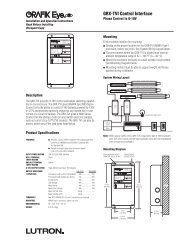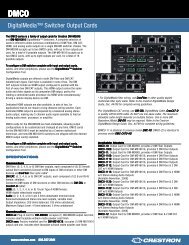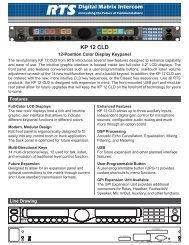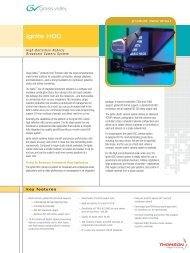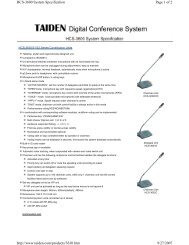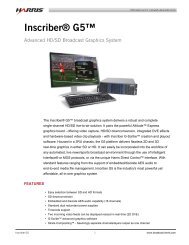TVG420 User Manual 2.2 (SW release 1.2.2)
TVG420 User Manual 2.2 (SW release 1.2.2)
TVG420 User Manual 2.2 (SW release 1.2.2)
- No tags were found...
You also want an ePaper? Increase the reach of your titles
YUMPU automatically turns print PDFs into web optimized ePapers that Google loves.
ASI-IP-GTW <strong>User</strong>'s <strong>Manual</strong>3.5.5 PingThe ping page can be used to check for connectivity between devices. Itis especially useful to ping the receiving data port from the IPtransmitter to see if the receiver can be reached. Figure 14 shows thePing page with its parameters.Figure 14 Ping tabIP destination: Enter the IP address to check for contact here. The pingmessages will be routed to the matching Ethernet port, either data ormanagement, or to the port configured as default managementinterface if the specified IP address does not match either of the twosub-nets. Remark that if you are pinging between data interfaces, the‘allow ping response’ option on the network page advanced tab (see ch3.5.1) must be enabled on both the transmitter and the receiver.TTL (Time to live): Enter the Time to Live value for the ping messageshere. The time to live value is a field in the IP protocol header that isdecremented once for each router that the diagram passes. When thecount reaches 0, the diagram is discarded. You can use this to checkthe number of routers from the transmitter to the receiver by startingwith a low value and increment it until answers are received. TTL isalso specified for each data channel on the IP transmitter, and must behigh enough to reach the receiver. Values range from 1 to 255.Ping count: The number of messages to send. The messages aretransmitted with an interval of about 1 second.Start: Press this button to start the ping sequence configured above.The status of the ping sequence is displayed in the status frame at theright side. Status values are reset on pressing the start button. AfterPage 36






